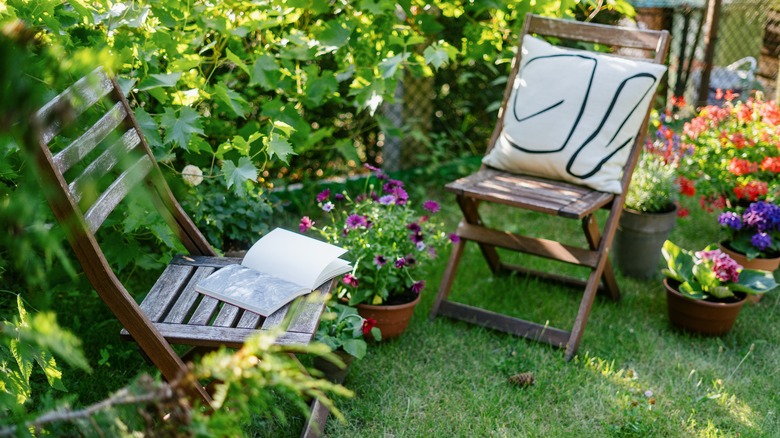This Wildflower Grows Perfectly In A Shady Yard Or Garden
The trees in your yard provide habitat for birds and animals, reduce runoff, clean the air, and reduce noise. Studies have shown they even improve mental health and reduce cognitive decline. Their cooling shade is welcome in the heat of summer, even if that shade is a roadblock to your gardening plans. Wildflowers like twinleaf (Jeffersonia diphylla) thrive in the shade, blooming in the spring and summer and enticing beneficial pollinators to your yard with their appealing flowers. Grow them among other shade-loving flowers, plant them as a single, dramatic mass, or use them as a border or along a pathway in a shady yard.
Planting twinleaf has benefits beyond its beauty in the landscape. This North American native is considered threatened or rare in nine states, including Alabama, Georgia, Iowa, Michigan, Minnesota, New York, New Jersey, North Carolina, and Wisconsin. Adding twinleaf to your shade garden helps slow down the possible extinction of the plant.
So named because the two sides of the leaf are so deeply divided they appear to be two leaves, twinleaf's one-inch-wide white flowers bloom on leafless stalks when the plant is 6 to 8 inches tall. After the bloom, the plant continues to grow until it's as much as three feet tall. When the short-lived flowers fall off, a green seed capsule forms and eventually opens a little lid at its top, releasing the seeds. In mid- to late-summer, the plant begins to die back.
Growing twinleaf in your shady yard or garden
Twinleaf, hardy in USDA Hardiness Zones 4 to 9, prefers deep shade with less than two hours of sun or partial shade, with only two to six hours of sun. The soil should be rich and moist with good drainage, conditions you'd expect to see in the forest, where twinleaf grows wild. If you're uncertain about the state of your soil, send it to the county extension office to be tested, or create your own DIY test to check its health. Adding a two or three inch layer of organic material or your own DIY compost to your soil is a quick fix for most deficiencies. Twinleaf can take a long to establish itself; water it frequently during its first season.
If the shade in your landscape comes from deciduous trees, twinleaf will be happy to cozy up to them because of their natural relationship. Plant spring and fall blooming perennials with twinleaf to create summer-long interest in the garden. The pink and white flowers of Dutchman's breeches (Dicentra cucullaria) complement twinleaf, but it, too, is an early bloomer. Vivid blue bottle gentian (Gentiana andrewsii) blooms from late August until the first frost. Ferns are a classic choice for shady gardens, but they do need a few hours of sun a day, so don't plant them in dense shade. Choose a native fern that will look lush all season that matches your garden's shade, soil, and growing zone.

